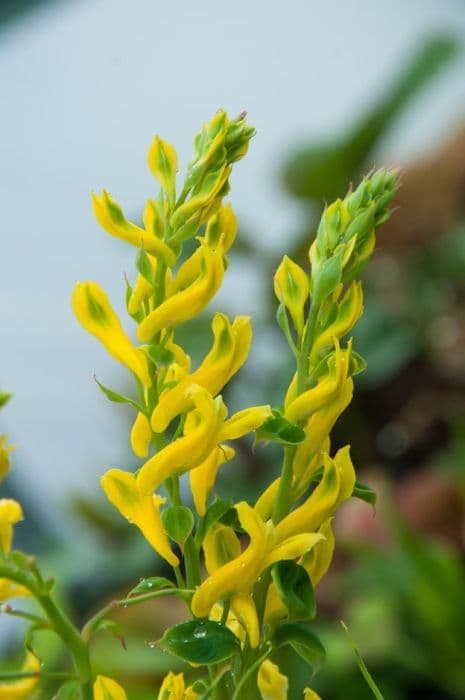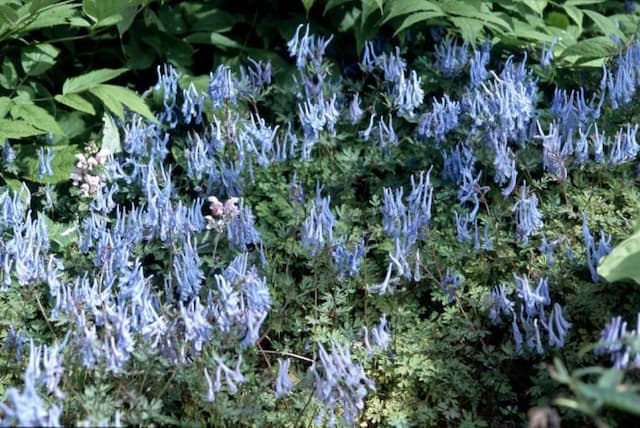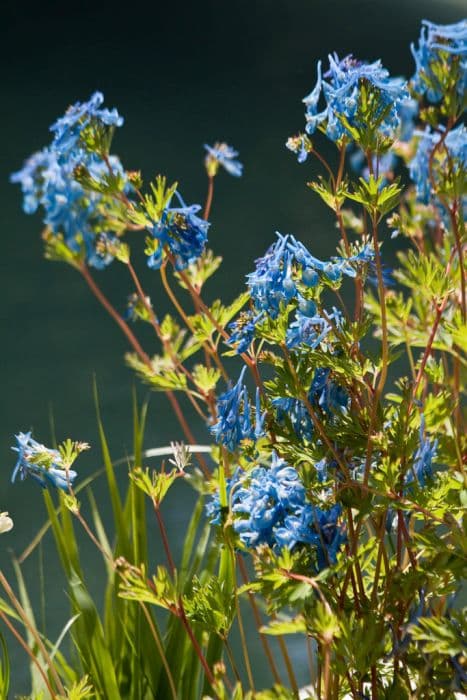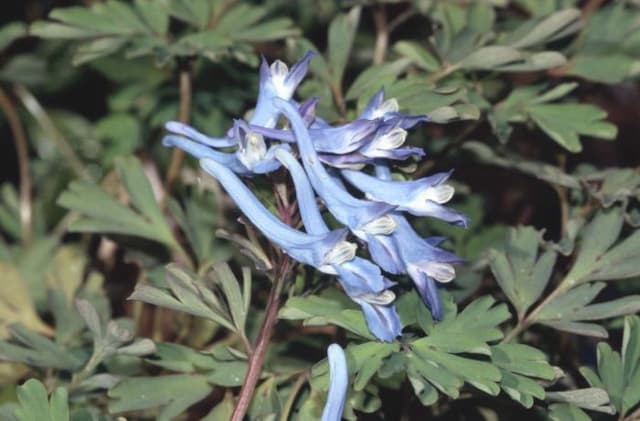Iceland Poppy Papaver nudicaule

ABOUT
The plant known as Iceland Poppy features a captivating display of delicate, cup-shaped flowers that perch atop slender, leafless stalks which emerge from a rosette of feathery, blue-green leaves at the plant's base. The flowers themselves boast a range of hues including white, yellow, orange, salmon, rose, pink, and cream. The delicate blossoms often have a satin-like sheen and occasionally display a darker colored eye at their base, creating a striking contrast. The Iceland Poppy's foliage is finely divided, imparting a soft, almost ferny texture. Once the flowers begin to bloom, this plant presents a vibrant and whimsical display that adds a burst of color to any garden setting.
About this plant
 Names
NamesFamily
Papaveraceae.
Synonyms
Iceland Poppy, Arctic Poppy, Nude Cap Poppy.
Common names
Papaver amurense, Papaver croceum, Papaver miyabeanum, Papaver nudicaule var. aleuticum, Papaver nudicaule var. interior.
 Characteristics
CharacteristicsLife cycle
Perennials
Foliage type
Deciduous
Color of leaves
Green
Flower color
Varies
Height
1 6 (30 cm)
Spread
1 0 (30 cm)
Plant type
Herb
Hardiness zones
2
Native area
Subarctic
Benefits
 General Benefits
General Benefits- Aesthetic Appeal: Adds vibrant colours to gardens and landscapes with its bright and varied flowers.
- Attracts Pollinators: Attracts bees and butterflies which are essential for pollination in the garden.
- Easy to Grow: Adaptable and can thrive in a range of soil types, making it suitable for novice gardeners.
- Cold Tolerance: Capable of surviving in cooler climates and can withstand light frosts.
- Edible Parts: The petals are edible and can be used in salads for a pop of colour and a mild flavour.
- Drought Resistance: Once established, it has good drought tolerance, reducing the need for regular watering.
- Seasonal Interest: Provides early spring blooms when few other plants are flowering.
- Landscaping Variety: Available in a range of sizes and forms to suit different landscaping needs.
- Rapid Growth: Quick germination and growth means it can provide color in the garden relatively soon after planting.
 Medical Properties
Medical PropertiesThis plant is not used for medical purposes.
 Air-purifying Qualities
Air-purifying QualitiesThis plant is not specifically known for air purifying qualities.
 Other Uses
Other Uses- Papaver nudicaule, commonly known as the Iceland poppy, has its dried seed pods used in floral arrangements to add an aesthetic appeal with their unique structure and natural color.
- The stems of the Iceland poppy can be used in basket weaving due to their fibrous nature, providing a rustic look to handmade baskets.
- Iceland poppy petals can be pressed and included in handmade paper to create a decorative appearance with natural flower imprints.
- The bright petals of the Iceland poppy are sometimes used for natural fabric dyes, producing a range of colors from the petals' pigmentation.
- Some gardeners use Iceland poppies as companion plants in vegetable gardens, believing they may help deter certain pests with their bright petals and light scent.
- Edible landscapes can incorporate Iceland poppies, as their presence can make vegetable gardens more visually appealing without taking up much space.
- Iceland poppies can be used in educational settings as a model to teach students about pollination and the lifecycle of flowering plants.
- Photographers and nature artists often use Iceland poppies as subjects or backdrops due to their vibrant colors and delicate blooms.
- In some cultures, dried petals of the Iceland poppy are used in potpourri mixes, contributing to the fragrance and color variety of the mix.
- During certain festivals or ceremonies, Iceland poppies may be used as natural confetti or decorative elements scattered for visual effect.
Interesting Facts
 Feng Shui
Feng ShuiThe Iceland Poppy is not used in Feng Shui practice.
 Zodiac Sign Compitability
Zodiac Sign CompitabilityThe Iceland Poppy is not used in astrology practice.
 Plant Symbolism
Plant Symbolism- Peace and Sleep - Papaver nudicaule, commonly known as Icelandic poppy, is often associated with sleep because of the opiate properties found in some poppy species which have historically been used to create sedatives.
- Remembrance - Poppies, in general, have been a symbol of remembrance, particularly for soldiers who have died in war, stemming from the poem "In Flanders Fields" which describes poppies growing among soldiers' graves.
- Beauty and Resilience - The Icelandic poppy, with its delicate appearance yet hardy nature, symbolizes the beauty of life as well as resilience in the face of difficult conditions.
- Imagination - The varied and vibrant colors of the Icelandic poppy blooms are thought to inspire creativity and symbolize the free flow of imagination.
- Messages Delivered in Dreams - The association of poppies with sleep also ties them to dreams. Thus, these flowers can represent the communication of important messages or insights through dreaming.
 Water
WaterThe Iceland Poppy requires moderate watering, being careful not to overwater. Ideally, water once a week with about one gallon per plant, ensuring the soil is dry between waterings. During hotter periods, increase watering frequency to prevent drying out, but always check the soil moisture first. Over the winter months, reduce watering significantly, as the plant goes dormant and requires less moisture. It's important to water at the base of the plant to avoid wetting the foliage which can lead to fungal diseases.
 Light
LightThe Iceland Poppy thrives best in full sun where it can receive at least six hours of direct sunlight daily. The ideal spot for this plant is a south-facing location that gets ample sunlight throughout the day. If grown indoors, make sure to place it near a window where it can receive plenty of natural light.
 Temperature
TemperatureIceland Poppies prefer cooler temperatures and can tolerate a minimum of around 20 degrees Fahrenheit, although they may not survive prolonged freezes. The ideal temperature range for the Iceland Poppy is between 55 and 75 degrees Fahrenheit. They can withstand brief periods above this range but optimal growth occurs within this cooler temperature spectrum.
 Pruning
PruningPruning the Iceland Poppy involves deadheading spent flowers to encourage more blooms and maintain a tidy appearance. This should be done throughout the blooming season as flowers fade. Pruning is not typically needed for plant health, but it can help improve vigor and blooming performance. The best time for pruning is in late summer or early fall, after the blooming has finished.
 Cleaning
CleaningAs needed
 Soil
SoilIceland Poppy prefers well-draining, sandy to loamy soil, with a pH range from 6.0 to 7.5. A mix that includes two parts sand or perlite, one part loam, and one part peat or compost works well to encourage strong growth and blooming.
 Repotting
RepottingIceland Poppies are typically grown as biennials, so repotting isn't usually necessary. If grown as perennials, they may be repotted every 2-3 years to refresh the soil and manage their size.
 Humidity & Misting
Humidity & MistingIceland Poppies do best in average humidity conditions; they are not tolerant of very high humidity. Maintaining a level that mimics their native habitats usually between 40-60% is ideal.
 Suitable locations
Suitable locationsIndoor
Provide bright light and well-draining soil for Iceland Poppies indoors.
Outdoor
Plant Iceland Poppies in full sun and well-drained soil.
Hardiness zone
2-9 USDA
 Life cycle
Life cycleThe life of Papaver nudicaule, commonly known as the Iceland Poppy, begins with the sowing of small, wrinkled seeds either in autumn or early spring, preferably in well-drained soil with a lot of sunlight. Upon germination, which takes approximately 14-28 days, the plant develops into a rosette of slight greyish-green leaves. As the plant matures, it sends up a flowering stalk, with each stalk typically bearing a single flower with silky, brightly colored petals that bloom in late spring to early summer. After pollination, which is mainly performed by insects, the plant produces a capsule containing numerous tiny seeds. These seeds can be dispersed by wind or when the plant is disturbed. The Iceland Poppy is a short-lived perennial or biennial which, if conditions permit, may self-seed and continue its growth cycle in subsequent seasons.
 Propogation
PropogationPropogation time
Spring to early summer
The Iceland poppy (Papaver nudicaule) is most commonly propagated by seeds. This is typically done in late winter or early spring, as the seeds require a period of cold to germinate effectively—a process known as stratification. To propagate Iceland poppies by seeds, you should first scatter the tiny seeds thinly over the surface of a tray filled with a well-draining seed starting mix. The seeds need light to germinate, so they are not covered with soil but can be gently pressed into the soil to ensure good contact. The tray should then be kept in a cool location, around 55 to 60 degrees Fahrenheit (13 to 15.5 degrees Celsius), and maintained moist but not waterlogged. Germination can take anywhere from 14 to 28 days. Once seedlings have developed a couple of true leaves, they can be carefully transplanted to their final growing location, ensuring they are spaced out adequately to accommodate mature growth.









